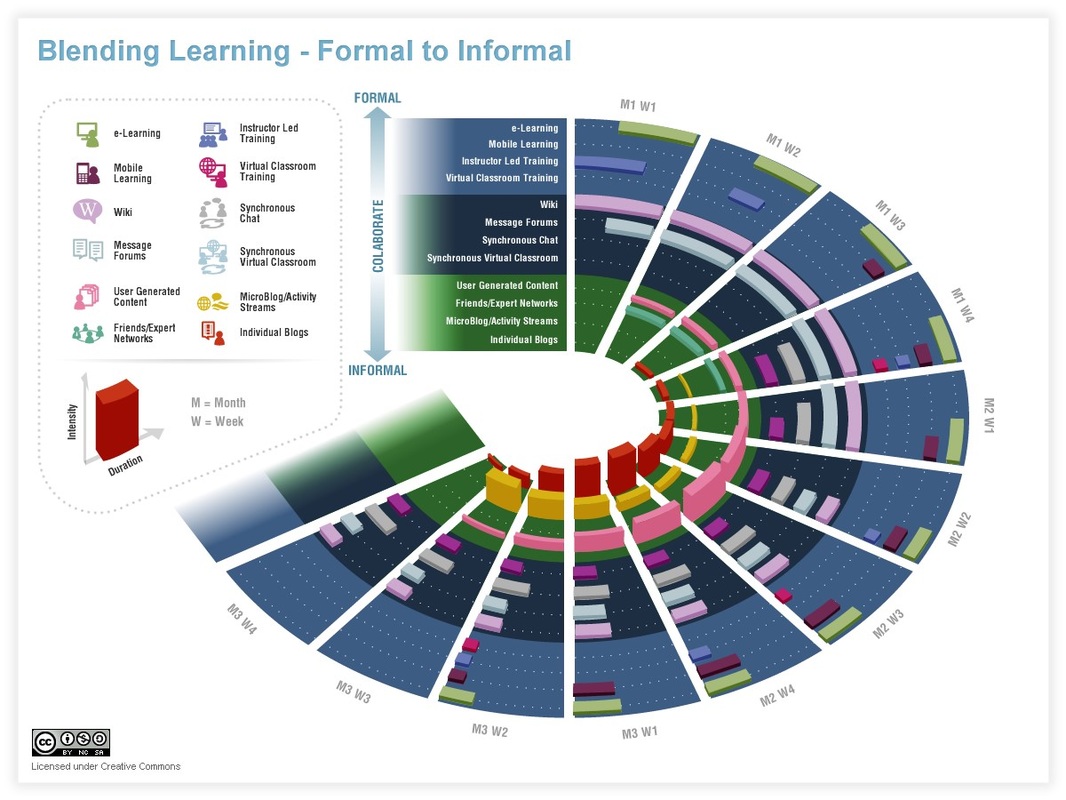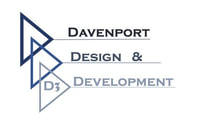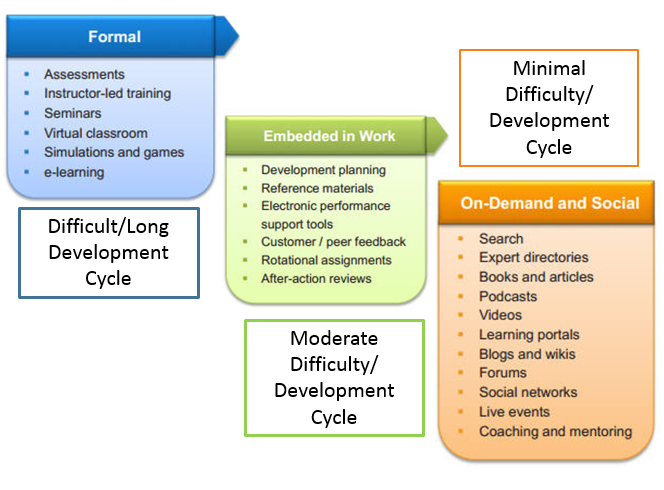In February’s Training Pros Learning Views Webinar – Easy Learning That Works – Teresa Davenport of Davenport Design & Development presented a historical perspective on how instructional designers have worked for years in a “if you build it they will come” cycle of course development. The assumption that we build courses and learners will take our courses was a given. But in the last decade, with the emergence of a new generation of learners AND new technologies such as Google search, Siri, learning games, and social learning, it seems that learners are moving on to learn without us! What does this mean for the future of instruction systems design? Is it becoming a skill of bygone days?
Teresa used an infographic to show how the older and more traditional ways of learning such as classroom and eLearning require a fairly extensive amount of instructional design expertise, and a long development cycle. Learning that is embedded in work, such as EPSS and on-the-job learning require less expertise and a shorter development cycle. And the newest technologies available allow learning to take place with minimal skill and time from on instructional designer.
Teresa used an infographic to show how the older and more traditional ways of learning such as classroom and eLearning require a fairly extensive amount of instructional design expertise, and a long development cycle. Learning that is embedded in work, such as EPSS and on-the-job learning require less expertise and a shorter development cycle. And the newest technologies available allow learning to take place with minimal skill and time from on instructional designer.
Teresa showed that the instructional designer’s skills are not becoming outdated, but they certainly need to adapt to the widely expanding options for learning. She made the point that decades-old instructional design methodology is still relevant today, but must adapt to new ways of learning in order to remain useful. Instructional design skills will continue to be needed in the following ways:
The Need For a Master Plan(ner)
Instructional designers skilled in Analysis and Design are in continuing demand in the workplace to devise master learning plans that hold together a cohesive learning strategy. While a learner may only see a front-facing view of what is to be learned, such as in a Learning Dashboard, the instructional designer must devise ways for the learner to access what is to be learned.
This is where the instructional designer becomes the new “learning architect.” Design strategies of the past assumed that the learning solution would only include one type of delivery strategy, such as classroom or eLearning. Now, a single learning solution such as employee onboarding or a technical certification might include 10 or more delivery strategies, including:
She applied the example of learning to be an eLearning developer over a three-month period by using the strategies included in this graphic.
The Need For a Master Plan(ner)
Instructional designers skilled in Analysis and Design are in continuing demand in the workplace to devise master learning plans that hold together a cohesive learning strategy. While a learner may only see a front-facing view of what is to be learned, such as in a Learning Dashboard, the instructional designer must devise ways for the learner to access what is to be learned.
This is where the instructional designer becomes the new “learning architect.” Design strategies of the past assumed that the learning solution would only include one type of delivery strategy, such as classroom or eLearning. Now, a single learning solution such as employee onboarding or a technical certification might include 10 or more delivery strategies, including:
- eBlast podcasts or videos to announce learning or change management initiatives
- Social learning feeds to direct learners to blogs, podcasts, eLearning, etc.
- Webinars or “lunch-and-learns,” recorded for later replay
- Asynchronous learning, such as eLearning tutorials, simulations, and games
- Flipped classroom courses to allow learners to exchange and practice the information they’ve been gathering independently
- Performance Guides for on-the-job (OJT) practice
She applied the example of learning to be an eLearning developer over a three-month period by using the strategies included in this graphic.

The learning path in this example of novice-to-expert eLearning developer provides 12 different learning options, including:
The Need for Intentional Learning
While casual learners can use Siri and Google for casual knowledge-gathering and possible even how-to info, this still only gets a learner halfway through Bloom’s Taxonomy. And the learning is learner-driven. In the workplace, with time and productivity at a premium, instructional designers must be able to curate (research and cull) information so that only the information that is needed is placed in front of learners, and it is placed in such a way that a learner can access “just-in-time” information.
The ability to construct a learning portal that puts the access to knowledge and skills where learners can easily find and use it is one of the new skill sets that instructional designers – now “learning architects” – must have to remain viable in the marketplace.
Teresa reiterated the theme of “easy” learning in that learning is easy for the learner because:
She also pointed out that learning is getting easier for instructional designers – the new “learning architects” – because the area where learning is seeing the most growth is in information access. Our role as curators of that information is increasing, and our role as architects of “smart” learning environments is perhaps our most in-demand skill. Key skills we need for the future:
- Classroom and eLearning courses to kick off the learning, then diminish over time
- Use of a Wiki for learning basic terms
- User-generated content and expert forums and networks (e.g. eLearning Heroes) to get help from experienced users
The Need for Intentional Learning
While casual learners can use Siri and Google for casual knowledge-gathering and possible even how-to info, this still only gets a learner halfway through Bloom’s Taxonomy. And the learning is learner-driven. In the workplace, with time and productivity at a premium, instructional designers must be able to curate (research and cull) information so that only the information that is needed is placed in front of learners, and it is placed in such a way that a learner can access “just-in-time” information.
The ability to construct a learning portal that puts the access to knowledge and skills where learners can easily find and use it is one of the new skill sets that instructional designers – now “learning architects” – must have to remain viable in the marketplace.
Teresa reiterated the theme of “easy” learning in that learning is easy for the learner because:
- Learning opportunities are everywhere are easily accessible
- Little skill is needed to access and use web browsers and learning portals
She also pointed out that learning is getting easier for instructional designers – the new “learning architects” – because the area where learning is seeing the most growth is in information access. Our role as curators of that information is increasing, and our role as architects of “smart” learning environments is perhaps our most in-demand skill. Key skills we need for the future:
- Curation – finding relevant information and placing it in front of the learner (easy!)
- Re-using the same information for multiple delivery outputs. In other words, creating one piece of content and re-using it for a podcast, video, tutorial, blog, etc. (easy!)
- Designing “master plans” that incorporate multiple delivery options (not so easy). As the new “learning architect,” instructional designers must add a component to their learning design that allows for multiple delivery strategies, and the ability to manage a multi-platform learning solution from needs assessment through evaluation.



 RSS Feed
RSS Feed